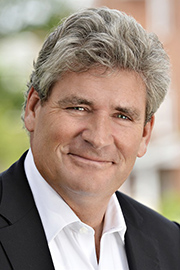- Hear!
- Rabble!
- Jun/4/24 4:20:00 p.m.
- Re: Bill 192
I’m more than honoured to rise today in support of my colleague from Nickel Belt’s bill, a bill to improve patient-to-nurse ratios in hospitals in Ontario.
Speaker, our health care system is in crisis. You know it. I know it. Everyone in Ontario, apparently except the government, knows it. And do you know who knows it more than anyone? It is the nurses that are working currently in Ontario.
Things aren’t getting better, despite the words that were just read to us. There are longer waits in emergency hallways. We have more code zeros, which means that the ambulances aren’t available at any given time. There are 2.4 million people who don’t have a doctor in Ontario, and there are hospital closures. We have Minden, now Durham—permanent hospital closures, and this year Ontario saw over 1,200 emergency departments shutting down, in large part because of a lack of nurses.
So, Speaker, and to my colleagues, what comes to mind when you think of a nurse?
Interjection: Burnout.
Interjection: Exhausted.
There’s an organization called WeRPN that represents 59,000 regulated health professionals, and they identified that 48% are considering leaving the profession—no wonder—and 72% identified patient-to-nurse ratios as the key issue.
So if this government is actually concerned or is actually listening, here’s your solution, because the first step in any problem is admitting that you have a problem, which we do in Ontario: better patient-to-nurse ratios. It’s a win for nurses, it’s a win for patients and it’s a win for hospitals. Improving patient-to-nurse ratios will benefit nurses because they won’t be overloaded, it reduces stress levels, and it makes them less likely to be sick or go on long-term disability.
I can only imagine the anguish experienced by urgent care nurses when they’re expected to go from caring for one patient to handling up to five very sick patients simultaneously. It’s a win for patients who receive treatment with better care and have a better chance of recovery. It’s also a win for hospitals because not only will they have better patient outcomes, there is compelling data to say that they will reduce costs. A recent study revealed that a nurse-to-patient ratio of 1 to 4 would prevent over 1,500 deaths yearly while saving hospitals $117 million per year.
It doesn’t matter how many beds you say are open or how many hospitals are open. Without nurses, a hospital or long-term-care beds are just furniture; they’re just buildings. And don’t say we don’t have the money. We’re spending a billion dollars on beer in this province. We need to spend it on our health care.
I’m hoping this government will finally listen to the stories we’re telling you and finally admit that there is a problem in health care, in nursing, and here is your solution.
- Hear!
- Rabble!

- Jun/4/24 4:20:00 p.m.
- Re: Bill 192
Quand l’année a commencé, les infirmières étaient déjà claires. On pouvait lire dans les médias que les syndicats des infirmières avaient conduit des sondages. Les résultats des sondages : 90 % des travailleurs dans les hôpitaux du nord de l’Ontario disaient qu’il manquait de « staff » et près de 50 % pensaient à quitter leur emploi dans les prochaines années à cause du stress, de l’anxiété, de la fatigue.
Ce sondage-là avait été fait sur plus de 750 membres de CUPE et inclut des infirmières praticiennes, le personnel de support et les autres travailleurs de nos hôpitaux. Ce n’est pas normal, ces chiffres-là.
On parle des institutions qui représentent 50 000 employés au total à travers l’Ontario. L’article ne s’arrête pas là. On découvre aussi, sans grande surprise, que le secteur perd des employés qualifiés à cause des conditions de travail pénibles et de « burnout » qui en découle. Ces chiffres me rentrent dedans. Je viens de Kapuskasing. J’ai grandi à Dubreuilville. J’ai de la famille partout dans le Nord.
Je vous l’ai écrit dans une lettre ouverte, il y a à peine un mois. Dans le Nord, on manque de tout. On ne peut pas laisser notre système de santé continuer à s’effondrer. Pendant que les infirmières quittent le secteur public pour gagner le salaire et les conditions du système privé et que le gouvernement paie la facture en double, le Nord en arrache.
Je salue l’effort constant de ma collègue la députée de Nickel Belt, France Gélinas, qui ne passe pas un jour sans amener des solutions pour le système de santé. Aujourd’hui, c’est simple ce qu’elle apporte, mais ça aurait un impact tellement important. Amener un quota d’infirmières-patients, ce n’est pas censé être controversé. C’est déjà le cas dans plusieurs provinces et d’autres pays, et ça marche. On ne réinventera pas la roue. Dites-moi, comment peut-on continuer de faire fonctionner nos cliniques et nos hôpitaux sans personnel qualifié? Soulignons-le : le gouvernement n’a actuellement aucun plan de rétention du personnel, mais ma collègue la députée de Nickel Belt en propose un aujourd’hui et j’espère sincèrement qu’on va se rallier derrière sa motion.
Il y a un autre article, cette fois-ci, dans le Timmins Today. On lisait que 81 % des infirmières rapportent un stress élevé et que 58 % d’entre elles se sentent malades à l’idée d’aller travailler. C’est urgent. Il faut changer la donne. Il faut supporter la motion 192, un quota d’infirmières-patients.
- Hear!
- Rabble!
- Hear!
- Rabble!
- Hear!
- Rabble!
- Hear!
- Rabble!
- Hear!
- Rabble!
- Jun/4/24 4:30:00 p.m.
- Re: Bill 192
I’m pleased to stand and rise today and support Bill 192 from the member from Nickel Belt and congratulate her again on bringing forward a sensible, thoughtful bill. These essentially are international standards. These are things that are accepted across the world.
I come at this from—I’m the son of a hospital nurse. She worked at National Defence Medical Centre for 33 years on the floors. I used to pick her up at work when my dad was away. Here’s the thing I knew: If my mom finished shift at 11 o’clock, I didn’t need to get there at 11 o’clock. I should probably get there around 20 after and then, maybe by a quarter to 12, she’d be coming out. That’s because she stayed to make sure that her job was fully done, and she had good ratios back then.
This isn’t going to work—and I want it to work—if you don’t have the nurses to fill it, to fuel it, to make it work. When I hear arguments from the government like, “You voted against this,” “You voted against that budget,” I could list off a bunch of things like the Nursing Graduate Guarantee that your party voted against; the late-stage nursing program to keep nurses in the profession—you voted against that.
It’s not about that. We don’t have enough nurses, and things like Bill 124 that essentially take away nurses’ rights to bargain—nurses’ rights to bargain. The thing I remember about that is, there was a whole bunch of people who could still bargain. They were mostly men. Nurses are not exclusively women, but they’re mostly women, but you took away their bargaining rights. It’s a total lack of respect. If you want to keep people working for you, you need to respect them, and the Premier’s wrong-headedness and the Minister of Health’s wrong-headedness of continuing with Bill 124 did more damage than anything else.
The second thing is, you’ve got to pay them. That’s the other thing about Bill 124, but right now, you’ve got to pay them. Why are nurses leaving to go to work for private agencies? The pressure they’re feeling at work, not enough staff to help them—they feel like they can’t do what they are taught to do, what they desire to do for their patients. They don’t have enough time. Why did my mom stay for 45 minutes? Because she wanted to finish the job. They want to finish the job, but they have to have enough people. That’s the point.
The government needs to look at how they can do more not just to train more nurses but to retain more nurses, because that’s the problem. And unless we do that, unless we retain what we have and train up as much as we can, we’re not going to get to where we’re going to be able to do this. So I would hope that the government would vote for this today and support it, even though we know we can’t do it today. Because what it does is, it sets a standard that we have to achieve and that we all want to achieve.
We’re talking a lot about nurses. That’s what this is about. It’s about patients. It’s about the care that patients need and deserve so they can get well. That’s why the member is putting this forward.
I’m going to say one last thing about priorities: How is it that spending $1 billion to get beer and wine at the corner store a little more than a year earlier is more important than nurses and their patients, is more important than 2.3 million Ontarians who don’t have access to family medicine? How is it more important than people having to use their credit card instead of their OHIP card so they can get basic services? Those things are the things that are happening here in Ontario right now, and to spend $1 billion to make booze a priority over health care is just simply wrong.
- Hear!
- Rabble!
- Jun/4/24 4:30:00 p.m.
- Re: Bill 192
This Conservative government must support our Ontario NDP legislation and pass the Patient-to-Nurse Ratios for Hospitals Act. Thank you to our health critic from Nickel Belt. This act is a life-saving piece of legislation. There are simply not enough nurses in our hospitals to take care of patients with often complex needs.
As we once said, we need at least 22,000 more nurses here in this province. This government spoke of nurses as “health care heroes” during the pandemic, yet they didn’t even ensure they had the appropriate PPE to keep all of them alive. Some of our health care professionals died on this government’s watch. In fact, nurses were taken to court by this government. And I don’t need to reiterate the disaster that was this government’s Bill 124 on nurses—racialized and women, predominately, in that sector, I might add—and other public sector workers.
This government has sat idle while over a thousand emergency room closures last year happened. This is simply not good enough. Over 3,200 different studies have been conducted proving that a lower nurse-to-patient ratio is necessary to save lives and prevent burnout of our nurses. This piece of legislation is a win-win. It’s a win for the government, it’s a win for the official opposition, but most importantly, it’s a win for the nurses, their patients and their families.
One such report was WeRPN’s latest survey of over 1,300 registered practical nurses. The 2024 report found that “unsustainable workloads, wage compression, pressured working environments and a lack of support have continued to drive RPNs out” of the profession. The current nurse-to-patient ratio directly impacts patient care. Today, this government can turn the page and do something positive for a change that will directly impact all of our nurses, all of the nurses who have been advocating day in and day out over the last six years, begging this Premier to stop his privatization-of-health-care schemes.
I want to thank Joyce, my local community member and an RPN, for expressing her concerns to me via email. I echo every single one of them:
—introduce nurse-to-patient ratios to reverse deteriorating patient care and ensure workplace safety for nurses and patients;
—pay nurses what they’re worth;
—establish a fair and professional level of compensation for RPNs that reflects their knowledge; and, yes,
—reduce reliance on for-profit nursing agencies that are siphoning out our nurses, yet another way of prompting up this government’s privatization scheme.
So absolutely, we need this patients-to-nurses ratio legislation passed today.
- Hear!
- Rabble!
- Jun/4/24 4:30:00 p.m.
- Re: Bill 192
I want to begin, as the member of Toronto–St. Paul’s just did, by thanking the member from Nickel Belt. The member from Nickel Belt is the best Minister of Health this province is yet to have, but I see a day coming soon when this member is going to sit on that side of the House, and we are going to make sure we do what she is proposing today: make sure there are livable, attractive working conditions for every single health care professional in this province.
Do you know what we call people like the member from Nickel Belt back home, Speaker? We call them solutionaries. That’s what we call them, because it is easy for us, given the havoc in the health care system, to talk about all of the problems and we need to assess them, but we need to also celebrate the moments when someone puts forward a viable solution that people are doing elsewhere.
As my friends in government are talking about how “everything’s fine, there’s nothing to look at here,” I want to remind them that we are breaking records in hospital services closing. I want to note the fact that there were 1,199 instances in the past year where health care services were closed. That includes 868 emergency rooms. Those are not the kinds of records we want to break in the province of Ontario. Who suffers when the workplace ratios are so bad? Patients suffer, nurses suffer, the staff suffer, and there’s no amount of gloss you can put on this picture, Speaker.
I want to zoom in on Winchester District Memorial Hospital’s birthing unit. They have been unable to fill a vacancy for two RNs since 2007, and because of that, they’ve had to close this birthing unit for 763 hours in recent years. This is alarming. Can you think of the joy that families experience when their child is coming into the world? Can you think of the stress put upon that family when they have to go further afield to a different birthing unit? And it’s unnecessary. Just like the billion dollars we are paying to private nursing agencies, like Canadian Health Labs, that is putting hospitals in deficit positions under this government as they talk about how wonderful the situation is.
I want to thank people like Rachel Muir from ONA Local 83—hi, Rachel, if you’re watching this—who leads the Ottawa Hospital nursing unit. She remembers a time when she got into the nursing profession in the 1980s when you could count on having a patient-to-nurse ratio of four to five, but now people are getting upwards of six, eight, nine, 10, and we’re burning people out, and we don’t have to burn out.
If deputy ministers in this government can get 16% pay raises, if we can pork-barrel out money to beer companies, we sure as hell can give money to nurses who work hard in this province. Thank you, member for Nickel Belt.
- Hear!
- Rabble!
- Jun/4/24 4:40:00 p.m.
- Re: Bill 192
Back to the member for Nickel Belt for a two-minute reply.
Députée Gélinas has moved second reading of Bill 192, An Act to amend the Health Protection and Promotion Act with respect to maximum patient-to-nurse ratios. Is it the pleasure of the House that the motion carry? I heard a no.
All those in favour, please say “aye.”
All those opposed, please say “nay.”
In my opinion, the nays have it.
A recorded vote being required, it will be deferred until the next instance of deferred votes.
Second reading vote deferred.
Pursuant to standing order 36, the question that this House do now adjourn is deemed to have been made.
I recognize the member for Kitchener Centre.
- Hear!
- Rabble!
- Jun/4/24 4:40:00 p.m.
I really appreciate the time to talk about this issue today. Not many people know what desflurane is, so I totally understand why this circumstance came about, but I look forward to the opportunity of talking a bit about it and why it is the lowest of low-hanging fruit in terms of reducing emissions and saving money for our health care system.
The World Health Organization says that climate change is the biggest health threat facing humanity, and what we’re noticing is that people don’t always understand the impacts of climate change on their day-to-day lives, but we see more and more how it’s affecting our health with increased emergency room visits from slips and falls, extreme heat days, smoke inhalation, increasing rise in asthma and other health consequences.
I’m sad that the member from Cambridge—he’s interested in this topic. There is a glacier called the Doomsday Glacier. It is enormous and it’s sitting on the edge of a bowl, ready to go into that bowl, which will lead to a massive sea level rise across the planet. So I’ll look forward to hearing what he has to say about that.
Desflurane is not commonly known outside of medical circles, but more and more, the health sector has been moving away from this gas. I know the minister was curious what experts had to say, so I am here to share that today.
The Canadian Anesthesiologists’ Society recommends not using it. Ontario’s Anesthesiologists also support eliminating des from our hospitals. It’s also being banned in the European Union, Scotland and other jurisdictions around the world. So we know that experts in this field recommend banning des from our operating rooms. Why? Well, it costs more; it costs a lot more. In Health Sciences North, the hospital in Sudbury, they saved $250,000 by banning desflurane. In Mississauga, Trillium Health Partners saved $125,000 by banning it.
Not only is it good financially for hospitals to ban this, but it’s also a good way to reduce emissions. Des makes up about 5% of the carbon emissions of our hospitals, and if hospitals were a country, they would be the fifth-largest emitter worldwide. So that’s a benefit not only financially but also environmentally. So I hope that we can look forward to the government banning this anaesthetic gas.
Environmentally speaking, for example, the carbon emissions saved by Health Sciences North equated to driving to the moon and back four times. This is how much carbon emissions were reduced simply by banning desflurane.
One might ask: Well, why aren’t we banning it already? Good question, because there is an alternative, sevoflurane, which is 26.8 times less carbon emissions, and it’s cheaper. So we already have anaesthesiologists using the alternative. The companies who produce desflurane also produce the sevoflurane. It won’t have a negative impact on our economy. And so it makes a lot of sense. So if we don’t do it based on the reduction in carbon emissions, we should do it just based on the reduction of our budget to hospitals, the savings that they would see.
It’s part of a bigger work, though. I’d be remiss if I didn’t say that the Ontario Medical Association is looking for changes as part of a bigger work, like creating an office of sustainability. Yes, banning desflurane is a first step in reducing emissions in hospitals and saving money, but the OMA is looking to create a bigger, more holistic approach to reducing waste, reducing emissions in hospitals and saving more money in our hospitals sector.
We’ve seen since COVID the rise of single-use plastics and single-use apparatuses. Some of the stories are quite alarming of just throwing things out. A lot of newcomers who work in our hospitals sector are aghast at the amount of waste that we create, and I think if any of us has spent time in hospitals, we’re alarmed at the amount of garbage that’s going out the backdoor.
To say a few more words about that, at the Trillium health network, for example, using inter-surgical circuits saved $37,000 in one year; bring-your-own reusable bags saved $19,000; using Stryker sustainability services, they reduced their budget by $145,000; using reusable gowns—they don’t have a number, but they saved 15 tonnes of waste; and addressing the HVAC optimization saved $4,400.
I haven’t even mentioned a lot of the other types of waste and CO2 reductions—
- Hear!
- Rabble!
- Jun/4/24 4:40:00 p.m.
- Re: Bill 192
The bill is quite simple. I have shared with you testimonies from many, many nurses. Our nurses are burnt out. Many of them are out on sick leave. Many of them are out on long-term disability. Many of them are choosing to stay home. And 35,000 of them actually are choosing to not work in nursing. The number one reason for that is burnout.
We have an opportunity to help those nurses right now. This is something they have been asking for for a very long time. This is something they are telling us: “I will come out of retirement. I will go back to bedside nursing if you put in nurse-to-patient ratios.”
It exists throughout the world, from Australia to the US to the UK to India. It has been proven it works. It exists in Canada. Go out west. The NDP government put it in place in British Columbia, and it works. Nurses appreciate it, patient care improves, length of stay improves, the number of deaths decreases, and it’s cheaper for our hospitals. It’s a win-win-win.
On a l’opportunité aujourd’hui de faire un grand changement. On a l’opportunité d’écouter les infirmières et de s’assurer qu’on répond à leurs besoins. En répondant à leurs besoins, on va s’assurer que les patients reçoivent des soins de meilleure qualité. On va s’assurer que les infirmières et infirmiers se sentent appuyés et ont une charge de travail décente. Et on va s’assurer, en même temps, que les hôpitaux épargnent de l’argent. C’est gagnant-gagnant-gagnant. J’espère que tout le monde va appuyer nos infirmières.
I hope that everybody realizes that there are hundreds of thousands of nurses that are watching how we’re going to vote on this. They need the boost. Vote yes.
- Hear!
- Rabble!
- Jun/4/24 4:50:00 p.m.
To answer the member’s question: The use of desflurane is a clinical decision that should be best left with the clinicians, experts and the hospital leaderships, and our government will continue to trust medical experts on the best clinical tools to be used for patient safety.
But, Speaker, if the member opposite is interested in climate change and the environment, I am more than happy to talk about our government’s initiatives and actions of our health care partners.
Let me first tell you about Niagara Health System and the steps they have taken to be more energy efficient. The innovative design features at the St. Catharines site and recent investments across their other sites aim to lessen the footprint on the environment and lower long-term operating costs. The St. Catharines site is one of the first hospitals in Ontario designed to achieve certification under the Leadership in Energy and Environmental Design, or LEED, classification, the green building rating system.
Niagara Health also invested approximately $10 million across all sites through an energy retrofit project that reduces energy use and operating costs. These improvements will save substantial amounts of natural gas and electricity for years to come.
Speaker, let me tell you about another great example at Sunnybrook Health Sciences Centre. Sunnybrook has five key environmental programs: energy conservation, waste management, sustainable transportation, procurement, and an awareness and education campaign. Their green initiatives include the Harry Taylor Solar Energy Wall; gas scavenging in the operating rooms; composting and biodegradable food containers in the cafeteria; the Honeywell Energy and Facility Renewal Program; and the Green Task Force.
According to the hospital, their energy improvements will save $2.6 million and reduce CO2 emissions by 8,965 tonnes annually. That’s the equivalent of taking 1,410 cars off the road.
Speaker, I am not quite done yet. The medical imaging team at the Toronto General Hospital provides high-quality care, diagnosis and image-guided intervention. The hospital actively works on energy efficiency and sustainability initiatives.
Additionally, Haliburton Highlands Health Services has implemented a geothermal upgrade to improve energy efficiency.
As the government of Canada is set to miss one of its own climate targets, under the premiership of Premier Ford, Ontario is on track to meet our Paris agreement and is responsible for 86% of Canada’s total emissions reductions. This achievement is only possible because of our government’s efforts, alongside my colleague the Minister of the Environment, Conservation and Parks, to build Ontario. This includes:
—making Ontario the global leader in electric vehicle production;
—working with the industry instead of against them, such as our government’s investments in green steel at AM Dofasco in Hamilton, which will see the equivalent emissions reduction of taking one million cars off the road;
—our historic investments in conservation through the Greenlands Conservation Partnership, which already has protected over 420,000 acres of land, an area two and a half times the footprint of the city of Toronto;
—holding polluters accountable by introducing new fines and tough emissions performance standards for large industrial emitters; as well as
—historic investments in the critical infrastructure to get Ontarians to where they need to be, such as the Ontario Line, which takes 28,000 cars off the road every day.
Again, Speaker, to answer the member’s question, these are clinical decisions that should be left with the clinicians and medical experts. Under the leadership of Premier Ford and Minister Jones, our government will continue to ensure a strong and robust public health system for all Ontarians for years to come.
- Hear!
- Rabble!
- Jun/4/24 4:50:00 p.m.
That’s time.
To reply, I recognize the member for Stormont–Dundas–South Glengarry.
This House now stands adjourned until tomorrow, Wednesday, June 5, at 9 a.m.
The House adjourned at 1655.
- Hear!
- Rabble!









